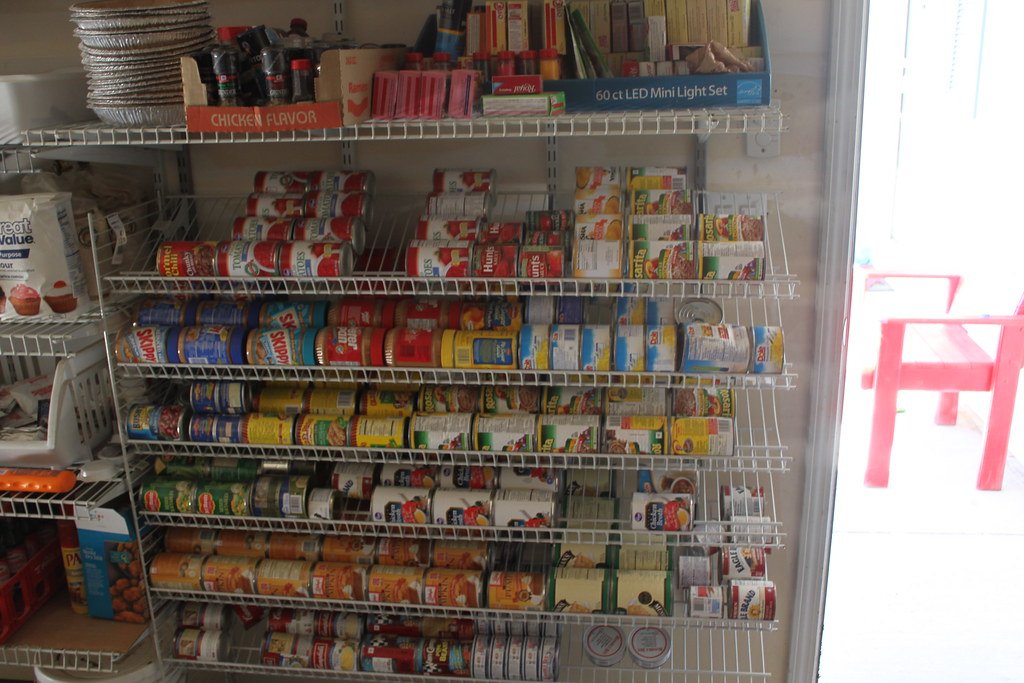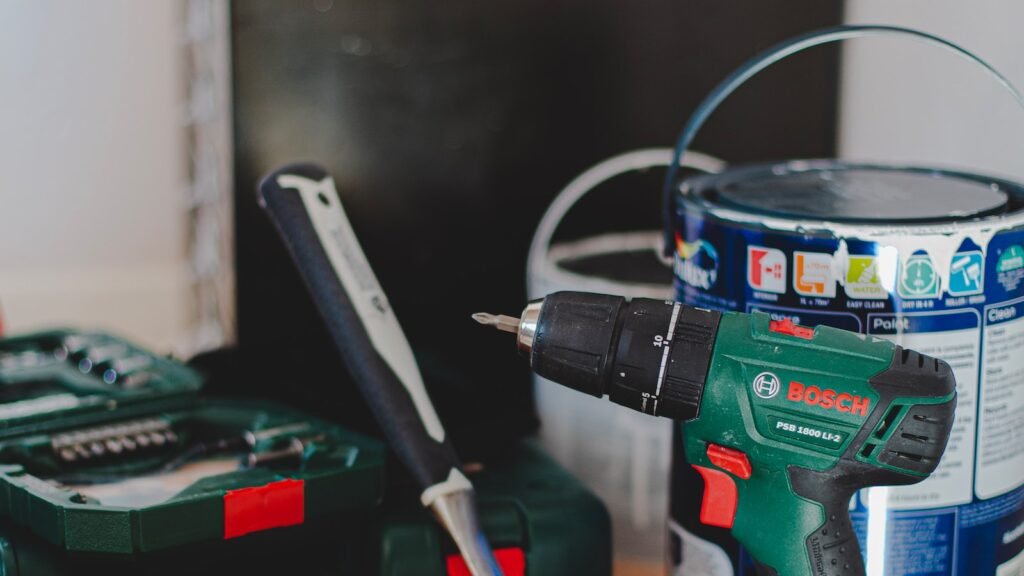Now Reading: How to Build a DIY Urban Food Storage System
-
01
How to Build a DIY Urban Food Storage System

How to Build a DIY Urban Food Storage System
Building a DIY urban food storage system is akin to constructing a miniature fortress against culinary chaos. As our bustling cities expand, so too does the need to preserve and safeguard our precious sustenance. Whether you find inspiration in the beauty of self-sufficiency or seek solace in knowing your pantry is fully stocked, this article will guide you through the enchanting world of urban food storage. So roll up your sleeves, flex those DIY muscles, and prepare to embark on a journey where ingenuity combines with practicality, resulting in a self-made oasis of edible abundance.
Table of Contents
- Setting Up Your Urban Food Storage System: An Overview
- Choosing the Right Containers: Size, Material, and Functionality
- Optimizing Space: Creative Storage Solutions for Limited Urban Areas
- Preserving Food: Techniques and Tips for Long-lasting Freshness
- Access and Convenience: Organizing Your Food Storage System Efficiently
- Q&A
- The Conclusion

Setting Up Your Urban Food Storage System: An Overview
An Overview of Setting Up Your Urban Food Storage System
Creating an efficient and practical urban food storage system not only ensures a steady supply of fresh and healthy ingredients but also allows you to maximize the limited storage space in a city setting. With a little planning and organization, you can set up a functional system that suits your needs and lifestyle.
1. Assess your storage space:
Take a careful inventory of the available storage space in your urban dwelling. Consider utilizing areas such as underutilized cupboards, shelves, or even a spare closet. Maximize vertical space by installing sturdy shelving units or utilizing wall-mounted storage solutions. By making the most of your available space, you can create a practical and visually pleasing storage system.
2. Identify your needs:
Determine the types of foods you consume regularly and the quantity you wish to store. Consider factors like expiry dates, shelf stability, and nutritional requirements. Prioritize foods that have a longer shelf life and can be easily rotated to ensure freshness. Items such as canned goods, dried grains, and legumes are excellent choices for urban food storage due to their longevity.
3. Organize your storage system:
Once you have assessed your storage space and identified your needs, it’s time to organize your urban food storage system. Categorize your items based on similar types or usage. Utilize transparent storage containers or labels to make it easier to locate specific items. Consider implementing a first-in, first-out rotation system to ensure that older items get used before newer ones. Additionally, don’t forget to maintain proper hygiene by regularly cleaning your storage area.
With a well-designed urban food storage system in place, you can enjoy the convenience of having readily available ingredients while minimizing waste and maximizing your living space. By incorporating these tips, you’ll be on your way to an organized, efficient, and space-saving food storage system in no time!

Choosing the Right Containers: Size, Material, and Functionality
When it comes to selecting containers for your storage needs, there are three key factors to consider: size, material, and functionality. These factors play a crucial role in ensuring that your containers not only meet your requirements but also enhance your overall organizational system.
Size
The first consideration when choosing containers is their size. It’s essential to determine the amount of space you have available for storage and the items you plan to store. Large containers are ideal for bulkier or oversized items, while smaller containers are more suitable for compact or delicate objects. Opt for containers that maximize space efficiency and allow for easy stacking, such as collapsible or nesting options.
Material
The material of your containers is equally important. Consider the nature of the items you intend to store and select materials that offer the necessary protection. Plastic containers are lightweight, durable, and water-resistant, making them ideal for storing everyday household items. For delicate or valuable items, opt for containers made of sturdier materials like metal or wood. Additionally, ensure that the material is easy to clean and maintain, promoting longevity and hygiene.
Functionality
Last but not least, consider the functionality of your containers. Think about how you plan to use them and choose accordingly. Some containers come with compartments or dividers, allowing for better organization of small items. Others may have wheels, handles, or labels, making them easier to transport and identify. Assess your specific needs, whether it’s easy access, portability, or labeling, and look for containers that offer the desired functionality.
- Ensure containers maximize space efficiency
- Choose materials that provide the necessary protection
- Consider containers with compartments or dividers
- Opt for functionality, such as wheels or handles for easy transport

Optimizing Space: Creative Storage Solutions for Limited Urban Areas
Living in a limited urban area often comes with the challenge of optimizing space and finding creative storage solutions. Fortunately, there are numerous innovative ways to maximize the available space in your home or apartment. Here are some unique ideas to help you make the most of your limited urban living area:
- Multi-functional furniture: Invest in furniture that serves multiple purposes. A sofa with hidden storage compartments, a coffee table that doubles as a desk, or a bed with built-in drawers can greatly increase your storage options without sacrificing style.
- Wall-mounted storage: Utilize the vertical space in your home by installing wall-mounted shelves, floating wall cabinets, or hanging organizers. These not only free up floor space but also add a stylish and organized touch to your limited living area.
- Under-utilized spaces: Look for under-utilized areas in your home that can be transformed into storage solutions. For example, the area under the staircase can be converted into a cozy reading nook with built-in bookshelves, or a narrow hallway can be lined with slim cabinets to store shoes and accessories.
- Vertical gardening: If you have limited outdoor space, embrace the idea of vertical gardening. Install wall-mounted planters or use hanging baskets to create a green oasis in your urban home. Not only will this add beauty to your space, but it will also improve air quality.
- De-clutter and organize: One of the most effective ways to optimize space is by decluttering and organizing your belongings. Pare down items you no longer use or need, and invest in storage bins, baskets, and organizers to group similar items together. This will not only create more space but also make it easier to find and access your belongings.
By embracing these creative storage solutions, you can transform your limited urban area into a functional and organized space that meets all your storage needs.
Preserving Food: Techniques and Tips for Long-lasting Freshness
Preserving food is essential for ensuring its longevity and minimizing waste. There are various techniques and tips you can utilize to keep your food fresh for extended periods. Here are some innovative methods:
1. Canning: This age-old method involves sealing food in airtight jars or cans, preventing the growth of bacteria and spoilage. Whether you’re preserving fruits, vegetables, or even meats, canning is an excellent way to retain freshness for months or even years. Just remember to follow proper canning procedures to ensure food safety.
2. Freezing: By freezing food at subzero temperatures, you can stop microbial activity and maintain the quality of your produce. This method is ideal for fruits, vegetables, bread, and even cooked meals. Remember to store food in airtight containers or freezer bags to prevent freezer burn and preserve flavors.
3. Dehydrating: Dehydration involves removing moisture from food, inhibiting the growth of mold and bacteria. You can dry fruits, vegetables, herbs, and even meats using an oven, dehydrator, or the age-old technique of sun-drying. The resulting dried products are portable and can last for months, making them perfect for on-the-go snacks or add-ons to your dishes.
Preserving food not only ensures your ingredients remain fresh but also allows you to enjoy seasonal produce throughout the year. With canning, freezing, and dehydrating, you can savor the flavors of your favorite foods long after their initial harvest. Give these techniques a try and explore a world of creative possibilities in your kitchen!
Access and Convenience: Organizing Your Food Storage System Efficiently
Creating an efficient food storage system is essential for maintaining a well-organized kitchen and ensuring easy access to your ingredients. Here are some practical tips and tricks to help you maximize access and convenience in your food storage:
- Categorize your ingredients: Sort your pantry items into categories such as grains, spices, canned goods, and snacks. This will make it easier to locate specific items when needed.
- Utilize clear containers: Transfer your pantry staples into clear, airtight containers to keep them fresher for longer and allow for easy identification of contents at a glance.
- Label everything: Invest in reusable labels or label makers to clearly mark each container. This will help you quickly find ingredients and remind you of their expiry dates.
- Maximize vertical space: Make use of vertical storage solutions, such as adjustable shelving or hanging racks, to optimize the space in your pantry or cabinets.
- Rotate stock: To prevent food waste, practice the “first in, first out” principle. Place newer items behind older ones, ensuring you consume the oldest items first.
By implementing these organization techniques, you’ll be able to maintain a streamlined food storage system that saves you time and effort when preparing meals. So, put on your organizational hat and transform your pantry into an efficient haven of access and convenience!
Q&A
How can I start building a DIY urban food storage system?
To start, assess your available space and make a list of the types of food you want to store. Then, design a system that maximizes vertical space, such as using shelves, hanging baskets, or wall-mounted racks.
What are some creative ways to store fruits and vegetables?
Get creative by repurposing items such as hanging shoe organizers or stackable crates to store fruits and vegetables. These options allow for proper air circulation and keep produce fresh for longer.
How can I make the most of limited space in my urban apartment?
Consider utilizing under-bed storage containers or building vertical shelves that attach to the walls. Using hooks or magnetic strips to hang pots, pans, and utensils can also free up valuable cabinet space.
What are some tips for organizing canned goods and pantry items?
One tip is to use a rotating can rack to easily access canned goods and avoid expiration dates. Additionally, using clear, stackable containers for pantry items will help keep everything visible and maximize space.
How can I protect my food storage system from pests?
To prevent pests, store food in airtight containers and regularly clean and vacuum the storage area. Consider using natural deterrents like lavender sachets or cedar blocks to keep unwanted critters away.
How can I maintain the freshness of my stored food?
Maintain freshness by regularly rotating your food stock and using the oldest items first. Keep track of expiration dates and use proper storage techniques, such as sealing bags tightly and storing items in temperature-controlled areas.
What are some budget-friendly storage solutions?
Explore thrift stores or online second-hand marketplaces for affordable storage containers and shelving. Repurpose items like mason jars, shoeboxes, or even old suitcases to store food items and save money on expensive storage systems.
The Conclusion
As we wind down this journey of creating your very own DIY urban food storage system, we hope you feel a sense of excitement and empowerment bubbling within you. In this quest for self-reliance and sustainability, you have delved deep into the world of urban gardening and resourcefulness, discovering the incredible potential that lies within your own two hands.
By now, you have transformed your little patch of concrete into a vibrant oasis teeming with life – a cornucopia of fresh produce that will sustain you through uncertain times. The walls of your urban jungle have seen the birth of seedlings, the growth of verdant shoots, and the satisfaction of harvests, all within the confines of limited space and a bustling cityscape.
As you marvel at the sight of your thriving garden, remember the sense of achievement that inches you closer to self-sufficiency. It is an achievement that extends beyond the confines of your storage system, reaching into the realms of your mind and spirit. By cultivating this green sanctuary of life, you have nurtured a deeper connection with nature, reminding yourself how intertwined we are with the Earth.
As seasons change and months pass, your food storage system will evolve, and so will you. You may encounter setbacks and challenges, but remember that every obstacle holds valuable lessons and opportunities for growth. It is through these hurdles that we refine our skills and sharpen our determination.
In a world where convenience and instant gratification often prevail, you have chosen a different path. Embracing the slow and deliberate art of urban food storage, you have received a gift that keeps on giving. Beyond just the plentiful harvests, you find pride in your resourcefulness, ingenuity, and resilience.
Now, armed with the knowledge and inspiration you have acquired, it is time to spread your wings and share your newfound expertise with others. Become an advocate for sustainable urban living, guiding others towards a path of self-reliance and environmental consciousness. Your powerful example can inspire a ripple effect, transforming barren concrete jungles into thriving havens of green.
So here you stand, a modern urban warrior, steadfast in your belief that even in the most unlikely spaces, hope can take root and grow. We hope this guide has been a guiding light on your quest to create a DIY urban food storage system. As you continue to nurture your urban oasis, remember that the power of transformation lies within you, and with each seed you sow, you are sowing the seeds of a better world.
As an affiliate, my content may feature links to products I personally use and recommend. By taking action, like subscribing or making a purchase, you’ll be supporting my work and fueling my taco cravings at the same time. Win-win, right?
Want to read more? Check out our Affiliate Disclosure page.





